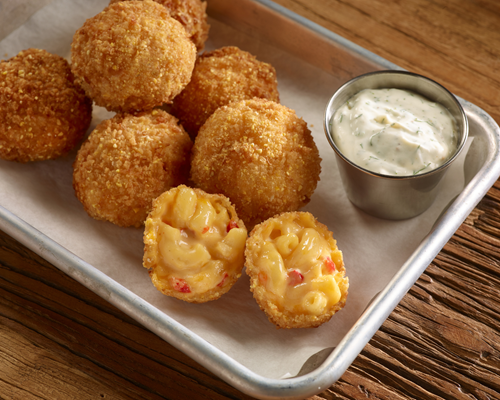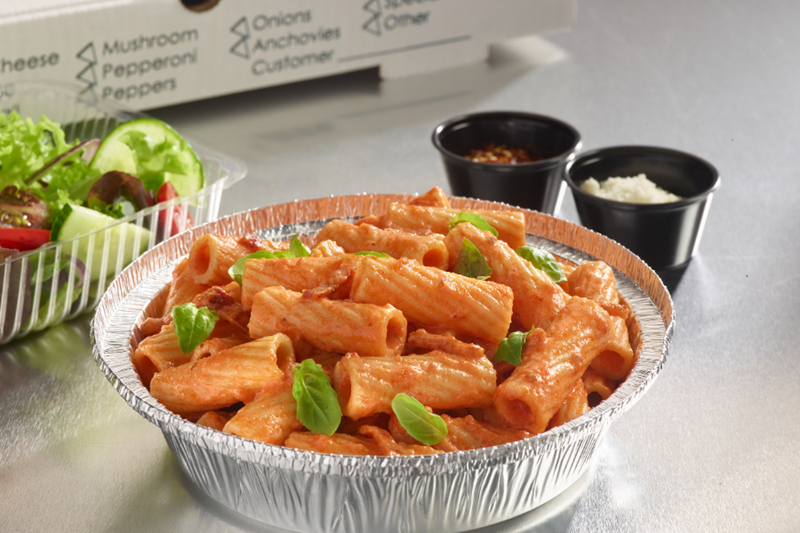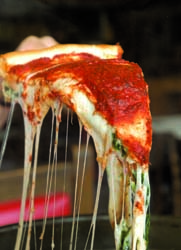 In the July issue of Pizza Today, Editor-in-Chief Jeremy White asked the question, “is pizza fast food?” He then answered with a resounding no, laying out his argument as to why pizza is anything but fast food. Not long after the commentary was published, the letters and e-mails came pouring in. Pizzeria operators from across the country, independents and chains alike, applauded the column. It seems the industry was ready for a rally cry.
In the July issue of Pizza Today, Editor-in-Chief Jeremy White asked the question, “is pizza fast food?” He then answered with a resounding no, laying out his argument as to why pizza is anything but fast food. Not long after the commentary was published, the letters and e-mails came pouring in. Pizzeria operators from across the country, independents and chains alike, applauded the column. It seems the industry was ready for a rally cry.
At about the same time, Matt McClellan, owner of Tour de Pizza in St. Petersburg, Florida, was on a mission of his own. He wanted to educate America about pizza’s positive attributes. To do this, he hopped on a bike and hit the road. Cycling much of the way from St. Petersburg to New York City, McClellan stopped in at dozens of pizzerias up the East Coast and held press conferences in which he touted pizza as part of an overall balanced diet. Pizza Today publisher Pete Lachapelle pedaled part of the way with McClellan, and the aforementioned White, along with Pizza Today Art Director Josh Keown and Web Developer Dennis Wyatt, also made appearances on the Tour.
“I got tired of people at my local gym calling pizza junk food,” says McClellan. “I wanted to prove that you could eat pizza and be healthy. So I went on a 30-day pizza diet and still lost weight and lowered my cholesterol.”
Adds White: “It’s time to change pizza’s fast food image. Pizza clearly is not fast food. Period.” White argues that America’s pizzerias make their products to order, whereas fast food restaurants have items ready at all times.
“At a fast food restaurant, you pick a number from a menu board and are handed your meal 30 seconds later,” says White. “At a pizzeria, you customize your meal and then wait 15 to 20 minutes while the staff makes your order fresh. The dough is typically fresh and made in-house. The sauce has typically been customized. The pizza is baked fresh and served fresh and piping hot. It’s convenient, but it sure isn’t fast. Nor should it be. Quality takes time.”
White says operators should take a cue from the Tour de Pizza and host their own media event. There’s no better advertising than free news press, he says.
“You don’t have to cycle hundreds or thousands of miles to be newsworthy,” he suggests. “Small, local newspapers across the country are starving for good stories. What have you done recently that is newsworthy? If nothing comes to mind, plan an event now. Start a fundraiser for a local elementary school or create a fun contest. Then send a press release to the local features or business editor. Tell them what you’re doing and why it will benefit the community. If it isn’t purely self-serving, the press will most likely be interested.”

In fact, says White, October is a perfect time to go after local press. It’s National Pizza Month. “That’s a story of immediate interest,” says White. “Send local newspapers and radio stations a pizza and a press release. The headline should read: ‘Pizza XYZ Celebrates National Pizza Month by Raising Money for Local Children’s Hospital.’ Whatever your promotion is, tie it in to National Pizza Month. Tell the press that for one weekend in October, or the whole month, or one day — whatever works for you — that you’ll donate ‘X’ percent of your sales to a local organization as your way of celebrating National Pizza Month. That’s the type of story that draws interest from editors.”
Don’t forget, when you do get press, to mention that pizza is not fast food — it’s something more substantial and wholesome. It’s a message the public should hear, says White. , “Some of pizza’s key attributes are convenience and price,” says White. “Ironically, those characteristics have helped put pizza into the fast food corner in the eyes of many. If you think about it, that’s what pizza and fast food have in common — convenience and affordability. But price and value should not be confused: price is what you pay; value is what you get. Let’s face it, pizza provides much more value than fast food. Few would argue that. But the industry hasn’t done a very good job of driving that point home. It’s time that happens.” Start by taking a look at some of pizzas benefits, says White. Take lycopenes, for example.

“Lycopenes are extraordinarily good for the human body — and tomatoes are a tremendous source of lycopenes,” says White. “Lycopenes are powerful antioxidants that have been shown to reduce the risk of prostate cancer and protect against heart disease. Your pizza sauce is full of lycopenes. Do your customers know that?”
Pizza also contains plenty of calcium. And while it is true that pizza is high in fat and sodium, it can fit into an overall balanced diet. “I eat pizza all the time, but I manage to stay thin and have good cholesterol,” says White. “The key is that I exercise daily and balance my meals. If I know I’m having three slices of pizza for dinner, I make sure I have a salad or plenty of vegetables and fruits for lunch. It isn’t a difficult equation. If you burn more calories than you take in, you’re not going to gain weight.” While most people assume pizza constitutes a high calorie meal, the fact is that balancing vegetables and protein and cutting the cheese portion a bit can make all the difference. In fact, says White, most people eat far more calories in other types of restaurants and don’t know it.
“Part of the problem is that many restaurants are afraid to publish their nutritional information,” he says. “They know the news isn’t good, so they opt not to share it with customers. As a result, most people really have no idea what they’re taking in when they go out to eat. They tend to grossly underestimate the number of calories and fat.”

For example, “typically, ballpark, two slices of pepperoni pizza will equal right around 700 calories,” White says. “That may sound bad. But compare it to other meals out there, and you’ll see that what an average customer might eat elsewhere actually adds up to more calories. Spaghetti and meatballs at Olive Garden, for example, takes you over 1,000 calories, according to Olive Garden’s Web site.
“Go to many casual dining restaurants, like Outback Steakhouse or Applebees or Ruby Tuesday, and there’s a really good chance your meal will go over 1,000 calories. Even the Mediterranean Veggie Sandwich at Panera Bread is 610 calories. Have a side item with that and you’re over 700 calories.” ?



